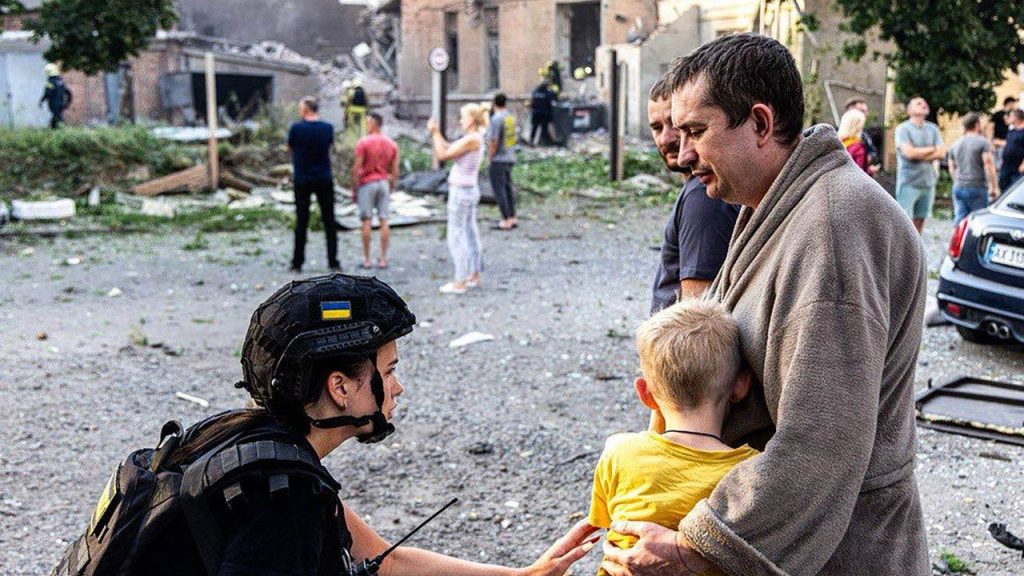In a significant diplomatic development, President Donald Trump announced a new NATO agreement that will facilitate the transfer of U.S. arms to Ukraine via allied nations. This landmark agreement, established during last month’s NATO summit, allows NATO to finance these arms transfers entirely. The news comes amid escalating tensions and ongoing military activities between Russia and Ukraine, raising questions about future military support and international relations.
| Article Subheadings |
|---|
| 1) Details of the NATO Agreement |
| 2) Reactions and Implications |
| 3) Calls for Increased Military Support |
| 4) Attacks on Ukrainian Civilian Areas |
| 5) Future Strategic Initiatives |
Details of the NATO Agreement
The agreement established during the NATO summit facilitates the provision of U.S. arms to Ukraine through NATO member states, with the costs being fully covered by NATO. This strategy is aimed at enhancing the military capabilities of Ukraine, which has been embroiled in conflict since Russia’s annexation of Crimea in 2014. President Trump, during a recent phone interview, emphasized the importance of this cooperation, stating that, “We’re sending weapons to NATO, and NATO is paying for those weapons, 100%.” This remark underscores both the tactical and financial frameworks being put in place to support Ukraine against ongoing aggression from Russia.
Reactions and Implications
Reactions from various political leaders and analysts have highlighted both support and skepticism regarding the NATO agreement. Some leaders in Europe are in favor of procuring U.S. arms, signaling a unified stance in support of Ukraine. For instance, German Chancellor Friedrich Merz stated that Berlin is “prepared to purchase additional Patriot systems from the U.S. to make them available to Ukraine.” This acquisition illustrates a broader commitment by NATO allies to contribute to Ukraine’s defense amidst the escalating tensions with Russia.
However, not everyone is convinced that this agreement will lead to a swift resolution of the conflict or significantly alter the military dynamics on the ground. Some analysts caution that while the influx of U.S. arms is vital, it may also provoke a further escalation in hostilities from Russia. Therefore, the implications of this agreement extend beyond just military logistics; they also touch on the delicate balance of international relations and the principles of collective security.
Calls for Increased Military Support
The call for enhanced military support for Ukraine has gained momentum, especially following reports about the Pentagon’s temporary pause on previously pledged defensive aid. Ukrainian President Volodymyr Zelenskyy has expressed his frustrations over these pauses and is actively seeking alternative solutions. His administration is reportedly exploring other channels for procuring arms to ensure that Ukraine remains equipped to handle ongoing threats from Russia. As Zelenskyy stated, “Our nation desperately needs these arms.” This urgency emphasizes the critical situation faced by Ukraine as it continues to engage in combat against Russian forces.
Attacks on Ukrainian Civilian Areas
The backdrop of this military assistance is marked by a series of aggressive strikes by Russian forces on Ukrainian territory. Just recently, attacks have intensified, resulting in casualties and damage, particularly to civilian areas like hospitals. In a tragic episode, a maternity hospital was reportedly struck, injuring women who were in labor or recovering from childbirth. President Trump, amid these developments, expressed his growing frustration towards Russian President Vladimir Putin for the ongoing military aggression, which he described as targeting life. “Women in labor with children, women after surgery,” he remarked, highlighting the indiscriminate nature of these attacks. Zelenskyy’s emphasis on the targeted nature of these strikes underscores the humanitarian crisis unfolding alongside military confrontations.
Future Strategic Initiatives
Looking ahead, the strategic landscape could undergo significant changes based on the evolving dynamics of NATO’s involvement and international diplomatic efforts. Secretary of State Marco Rubio hinted at presenting a “new and different” approach to ending the war in his meetings with Russian officials. His discrete discussions with Russian counterpart Sergei Lavrov add a layer of complexity, raising questions about potential shifts in U.S.-Russia relations.
As the situation continues to develop, it remains crucial to track how NATO’s support mechanisms will influence the course of the conflict. The fate of countless lives hangs in the balance as strategies and counter-strategies unfold on both military and diplomatic fronts.
| No. | Key Points |
|---|---|
| 1 | President Trump announced a NATO agreement for U.S. arms to be sent to Ukraine via NATO. |
| 2 | Germany plans to acquire U.S. weaponry, reflecting European support for Ukraine. |
| 3 | Concerns exist regarding the potential escalation of conflict due to increased military aid. |
| 4 | Ukrainian leadership expresses urgency for military supplies amid ongoing attacks. |
| 5 | Dialogue between U.S. officials and Russia raises questions about diplomatic strategies. |
Summary
The recent NATO deal to provide U.S. arms to Ukraine marks a pivotal moment in the ongoing conflict between Ukraine and Russia. Amidst rising concerns over civilian casualties and military aggression, the agreement reflects a concerted effort by NATO allies to bolster Ukraine’s defense capabilities. As various international leaders weigh in and politics unfold, the broader implications of this development bear careful monitoring, particularly concerning future diplomatic negotiations and military strategies. The crisis necessitates a united and calculated response from the international community to ensure regional stability and humanitarian support.
Frequently Asked Questions
Question: What does the new NATO agreement entail?
The NATO agreement allows U.S. arms to be supplied to Ukraine through NATO member countries, with NATO covering the full costs of these arms.
Question: How has Ukraine responded to the attacks from Russia?
Ukrainian officials, including President Zelenskyy, have called for increased military support from NATO allies as reports of intensified attacks on civilian areas continue to emerge.
Question: What potential impact might the agreement have on U.S.-Russia relations?
The agreement could potentially complicate U.S.-Russia relations, especially as discussions about diplomatic approaches are ongoing, raising questions about how both nations will navigate future negotiations.


